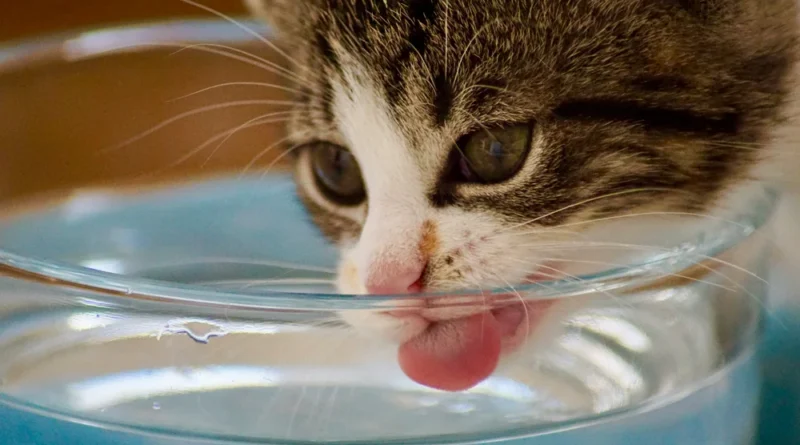How Long Can Cats Go Without Water
How Long Can Cats Survive Without Water?
We all know that water is essential for life, and that includes our beloved cats. Even though they may seem like they’ve got everything under control, cats can only survive without water for about 24 to 48 hours. And to be honest, waiting even a single day to offer fresh water can already put them at risk of dehydration.
It’s funny, though—cats don’t always seem to drink much water. If your cat eats a lot of wet food, you might think they don’t need water as much. But don’t be fooled! Although cats descended from desert-dwelling ancestors, the house cats we love today still need to stay hydrated. Wet food helps, but it’s no substitute for fresh water.
Even though cats can manage for a day or two without water, the effects of dehydration can hit fast. Trust me, it’s better to avoid the risks altogether and make sure your feline friend always has access to clean water.
How to Recognize Dehydration in Cats
Cats are masters of keeping their feelings to themselves, and dehydration is one of those things that they won’t let you know about directly. Since they can’t exactly say, “Hey, I’m thirsty!” it’s up to us to pay attention to the signs. Here are a few things to look out for:
- Dry Mouth and Nose: A healthy cat’s gums are usually moist, and their nose has that slightly damp feel. If you notice their gums are sticky or their nose feels dry, it might be a sign they’re not getting enough water.
- Sunken Eyes: Your cat’s eyes can tell you a lot. In a well-hydrated cat, their eyes will look bright and alert. But if their eyes seem a bit sunken or dull, dehydration could be the culprit.
- Skin Test: Here’s a simple trick to check for dehydration. Gently pinch the loose skin at the back of your cat’s neck (you know, the scruff area) and then let it go. If the skin snaps back into place quickly, your cat is probably fine. But if it takes a moment to return, it’s a red flag for dehydration.
- Lethargy: Cats love their naps, but if your normally playful kitty seems especially tired or just uninterested in life, dehydration could be the reason. Cats who aren’t getting enough water might act sluggish or weak.
Noticing any of these signs? It’s time to encourage your cat to drink more water or, if things seem serious, take them to the vet to make sure everything is okay.
What Affects Your Cat’s Water Intake?
Not all cats have the same hydration needs. Just like humans, a variety of factors influence how much water your cat needs each day. Here’s what you need to consider:
- Age: Kittens and older cats have different water needs. Kittens are full of energy and growing fast, so they need plenty of water. Older cats, on the other hand, might have health issues that make them more prone to dehydration.
- Health Conditions: Cats with certain conditions like kidney disease or diabetes tend to lose water more quickly. If your cat has any of these issues, they’re going to need more water than a typical cat, so it’s important to keep a close eye on their drinking habits.
- Diet: Diet plays a huge role in how much water your cat needs. Cats on a dry food diet will naturally drink more water because kibble doesn’t have much moisture. On the flip side, cats who primarily eat wet food will get some of their hydration from their meals, but they still need access to fresh water throughout the day.
- Activity Level and Environment: Cats who are more active or live in warmer climates need more water. If your cat loves to run around or if it’s hot outside, make sure you’re offering them plenty of chances to drink throughout the day.
Knowing what affects your cat’s water intake can help you make sure they’re getting enough hydration no matter the circumstances.
Wanna Know: Can Cats See Red
How to Help a Dehydrated Cat
So, you think your cat might be dehydrated—what should you do next? Don’t panic! Here are a few practical ways to help your cat get the hydration they need:
- Fresh Water: Cats can be really picky about their water. Some don’t like stale water or water that’s been sitting out for too long. Try offering fresh water a few times a day, and make sure their bowl is clean. Some cats even prefer drinking from a water fountain because the running water feels fresher to them. It’s worth a try!
- Wet Food: If your cat isn’t drinking enough, adding more wet food to their diet is a great way to sneak in some hydration. Wet food is loaded with moisture, so even if your cat isn’t lapping up water from their bowl, they’re still getting fluids. You can even add a bit of water to their dry food to make it easier for them to stay hydrated.
- Consult a Vet: If your cat is showing serious signs of dehydration—like constant lethargy, sunken eyes, or dry gums—it’s time to visit the vet. In some cases, cats need intravenous fluids to get back to normal. It’s always better to be safe than sorry.
- Encourage More Drinking: You can make drinking more appealing for your cat by placing multiple water bowls around the house. Cats can also be finicky about their bowls, so try experimenting with different materials like ceramic, glass, or stainless steel. And don’t forget to put their water in a quiet, peaceful spot—cats like to feel safe when they drink.
The goal is to prevent dehydration before it becomes a serious problem. By offering your cat plenty of water and staying on top of their hydration needs, you’ll be giving them the best chance to stay healthy and happy.

